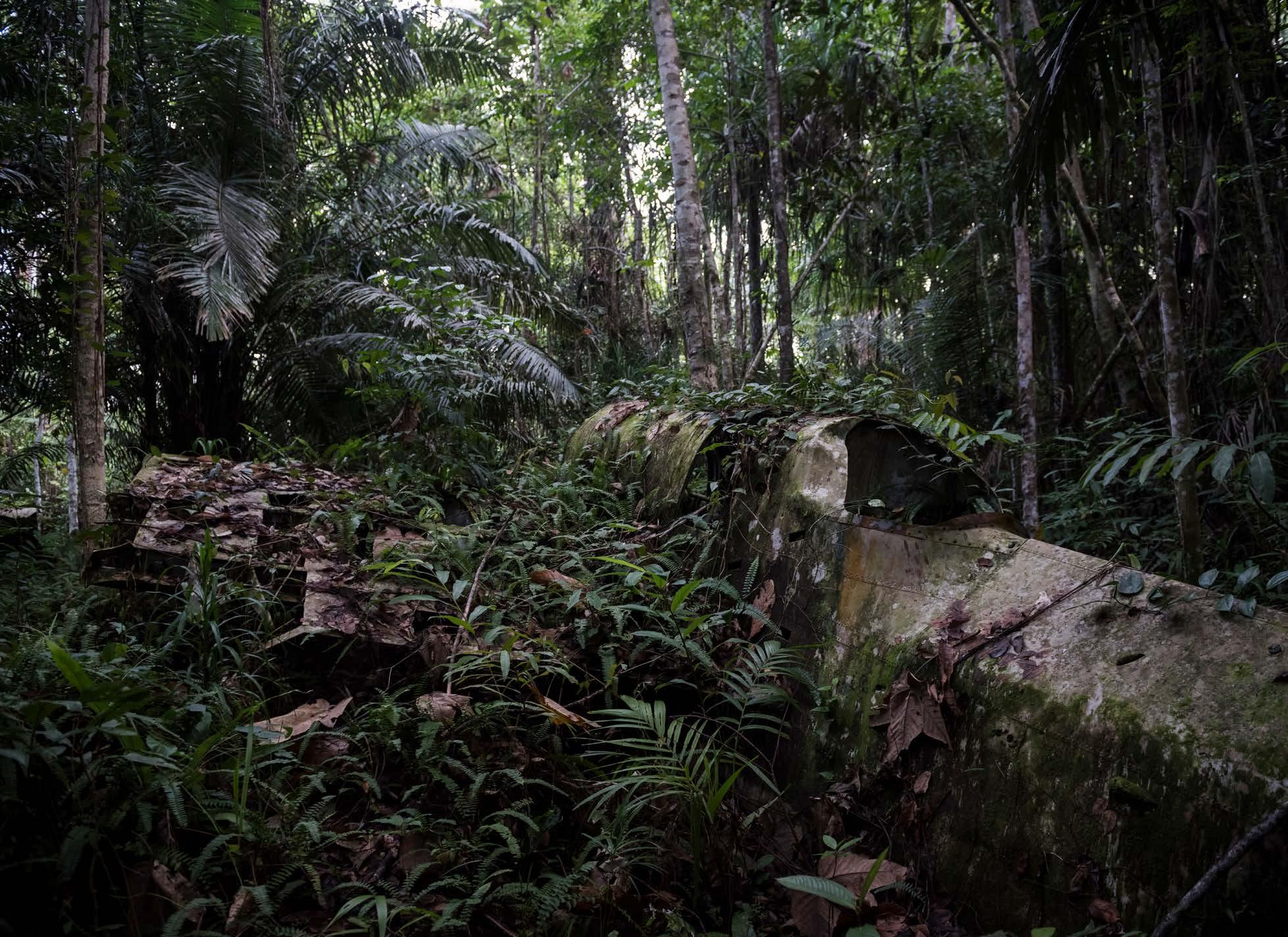
16 minute read
ISLAND ESCAPES
ISLANDS ESCAPES
EAST NEW BRITAIN
The capital of East New Britain is Kokopo, which lies in proximity to the original capital of Rabaul. Rabaul was destroyed in the volcanic eruptions of Tavurvur and Vulcan back in September 1994. Today, both townships provide a perfect base from which to explore the region.
Rabaul boasts an impressive collection of war relics, tunnels and caverns from the 1942 occupation by the Japanese. With a day’s notice, the Rabaul Hotel can organise local guides to take visitors around to see the remnants.
The Rabaul Volcanological Observatory was established after the 1937 eruption at Rabaul. The observatory is responsible for monitoring 14 active and 23 dormant volcanoes spread along three volcanic arcs throughout PNG. Nonetheless, the prevalence of volcanoes with their steep, rocky formations make for some memorable treks. Treks around Rabaul include walking from Volavolo Village to Mt Mother, the tallest mountain in the area. The hike to the top of Mt Mother is a sheer climb to 700 metres but offers fantastic views.
East New Britain is a great place to birdwatch as it is home to a number of exotic birds including the renowned hornbill. The caves in the region are regarded as world class, so be sure to check out the caves at Pomio which can be accessed by boat or vehicle.
If diving is your passion, the WWII wrecks that litter the reefs surrounding East New Britain offer diving and snorkelling with excellent visibility year round. Simpson Harbour, the location where 54 Japanese ships were sunk during the war effort, and the Beehives (a small group of craggy islands) both offer great diving. Tavui Point, once an official submarine base, provides fantastic snorkelling over Japanese submarines. Sport fishing for marlin and dogtooth tuna is available in the waters around both New Britain and Duke of York Islands. Boats operate from Rabaul, and hotels and guesthouses can also organise trips for you. The beautiful Duke of York Islands are remote but easy to access. The islands are also perfect for canoeing, swimming and snorkelling with accommodation available on some.
The Baining Fire Dance, which is unique to East New Britain, is routinely performed at night and showcases young men wearing distinctive masks dancing energetically in and out of fire. The dance is believed to be a rite of passage for Baining progeny and is performed to spirited chanting and drumming. Held in July each year, the National Mask Festival in Rabaul pays homage to the sacred masks of the region. The Frangipani Festival held in September features the Baining Fire Dance, sing-sings, a parade and much more.
Sights & Attractions
• Yamamoto’s Bunker
• Kokopo War Museum
• The Japanese Peace Memorial
• The National Mask Festival
• The Frangipani Festival
• Diving George’s Wreck
While geographically conjoined with East New Britain, West New Britain is officially a separate province. Kimbe is the capital of West New Britain and birdwatchers will be thrilled to learn that there are no less than 50 endemic species of birds in the Niugini Islands, 18 of which are found around Kimbe alone. The months of June, July and August are best for birdwatching as this is the mating season for the bird of paradise. Ask for assistance at Liamo Reef Resort or Walindi Plantation Resort with employing a guide to show you these magnificent creatures.
There are two plane wrecks in Talasea that are worth checking out. One of the wrecks is a US Mitchell B25 bomber and the other is a Lockheed Vega Ventura. The wrecks are located within 50 metres of each other and offer an insight into the hardships endured by fighting forces. The B25, which was employed to attack Japanese ships in Rabaul Harbour, was force landed after being hit by enemy forces on the portside wing.
The Garu Hot River, located in the hills behind Talasea, is an incredible feat of nature. With its fast flowing rapids, its hot water is a contradiction to the senses. The water runs at just over 41 degrees Celsius and is reputed to have therapeutic properties. You’ll need a four-wheel drive vehicle if you want to travel to the river.
While you’re near Garu Hot River, you’ll observe the villagers farming the eggs of the local megapodes, commonly known as the scrubfowl. Megapodes are similar to a large chicken and lay eggs continually. They take advantage of the warm volcanic earth that surrounds the hot river area and dig large holes in which they lay a clutch of eggs. Megapodes don’t sit with the eggs, but rather return when the eggs are due to hatch to clear a way for the hatchlings to exit. Locals harvest megapode eggs from the volcanic ash as a source of food and income.
For divers, there are many great options available around Kimbe with tours organised via Liamo Reef Resort or Walindi Plantation Resort. If you’re a serious fisher, then contact Liamo Reef Resort to organise a stopover at Baia Fishing Lodge on the north coast where bass fishing is taken to a professional level.
Visitors to Kimbe can stay in quality accommodation at Walindi Plantation Resort, Liamo Reef Resort and Kimbe Bay Hotel. Cheaper options include Mahonia Na Dari which also has a marine environment education program.
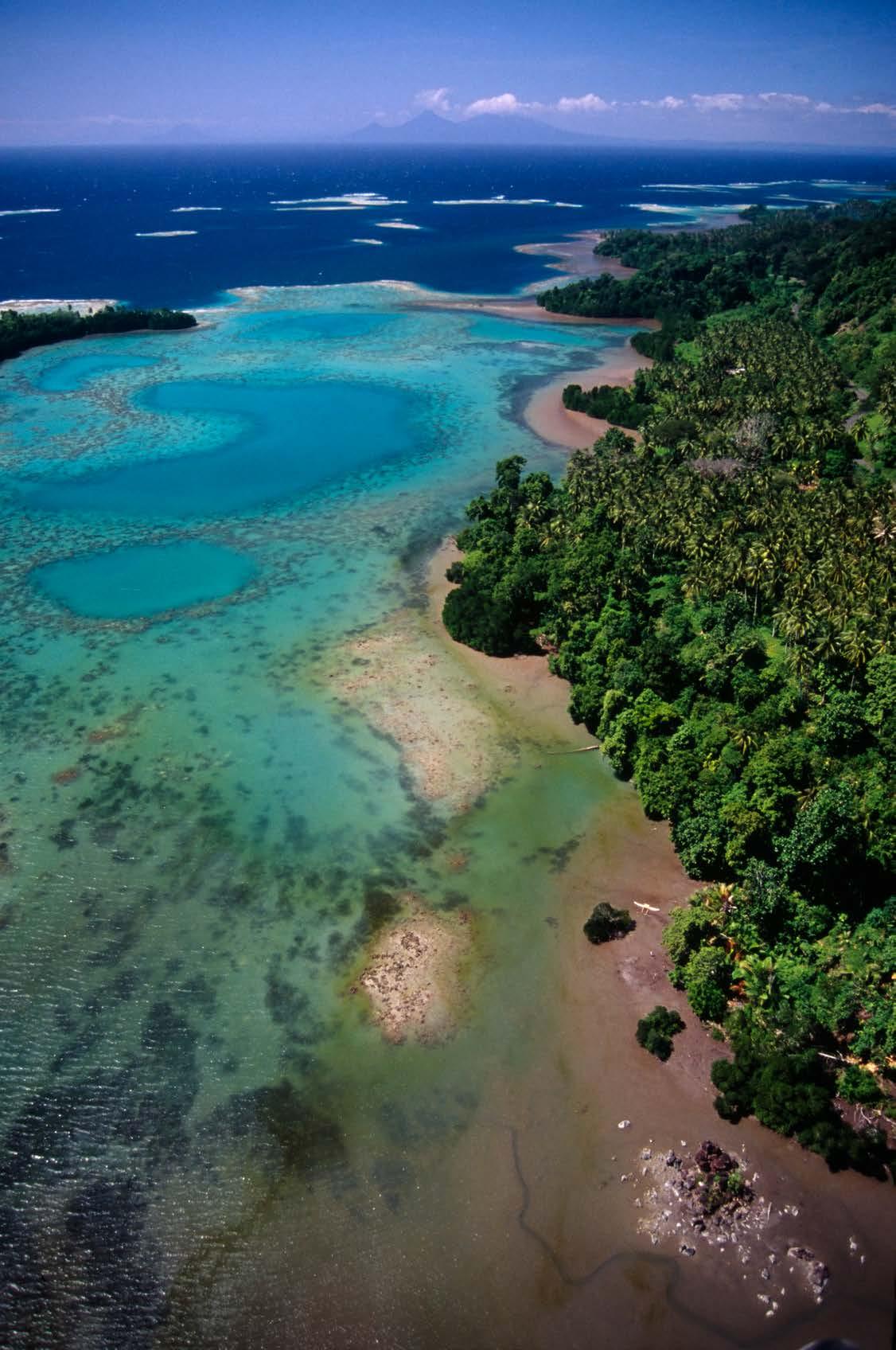

Sights & Attractions
• Diving Zero
• Garu Hot River
• Spotting Megapodes
• Mahonia Na Dari
Kimbe Bay
Kimbe Bay
Road by a palm tree plantation and volcano in Kimbe

Nestled in a picturesque harbour, Kavieng is located at the northern tip of New Ireland. While the township is small, it’s worthwhile spending a couple of days here to explore its unique attractions.
Near Kavieng Village Resort you’ll discover some good surf breaks. Just head towards the airport, turn left and follow the signs. The road becomes a dirt trail winding its way through a few small villages, however it takes less than ten minutes to arrive. You won’t be disappointed! The shoreline is one of the most beautiful in PNG boasting great waves, and further along a number of surf breaks. If required, a local can show you the best surf spots.
If you’re a history buff, visit the Bagail Cemetery where you’ll find the gravesite of Baron Boluminski. Boluminski was the first German government official to arrive in Kavieng in 1900. He brought peace to the island by policing the region and getting locals involved in building infrastructure. He is responsible for constructing the self-named Boluminski Highway, which is now famous for its 264 kilometre bike tour along the length of the island.
The most renowned land attraction on Kavieng is the feeding of the eels at Laraibina River. The relationship between the locals and the eels is a unique one. In ancient times, the villagers believed that if you killed an eel in the river between the beach and the bridge you would die as a consequence. Although nearby villages used the eels as a food source, the Laraibina locals refrained and for generations the same families of eels would return to the river.
It is believed that the eels live in the river until they are ready to breed and then travel to the deep ocean to bear their young. The mother eel dies, but the children return to the river and grow there until the cycle is repeated. Eel feeding is a truly memorable experience as the eels literally climb into the food bucket to gorge on succulent mackerel. While the eels don’t bite, you should only watch the feeding as their teeth are razor sharp and getting your finger caught could result in a nasty cut.
Laraibina River is approximately 70 kilometres from Kavieng on the main road. While it’s possible to navigate your way to this attraction, it’s not well signposted so do ask a local. The village nestled by the river is lovely, with stunning beaches close by (surfers are welcome) and a viewing area for the feeding of the eels. This activity costs K20 per person as well as you’ll need to bring a can of mackerel in natural oil which can be picked up at any trade store for around K5. You can spend a few minutes or an entire day in the village at Laraibina. If you pre-book, you’ll be served finger food all day long for K60 per person.
Traditional shark hunting is a practice also unique to New Ireland, particularly along the west coast near Tembin and Kontu. Locals who possess the ability to “call up sharks” lure the creatures to the boat before ensnaring them. To experience shark calling, enquire at the Tourist Office or Kavieng Hotel for a local who can guide you to this attraction.

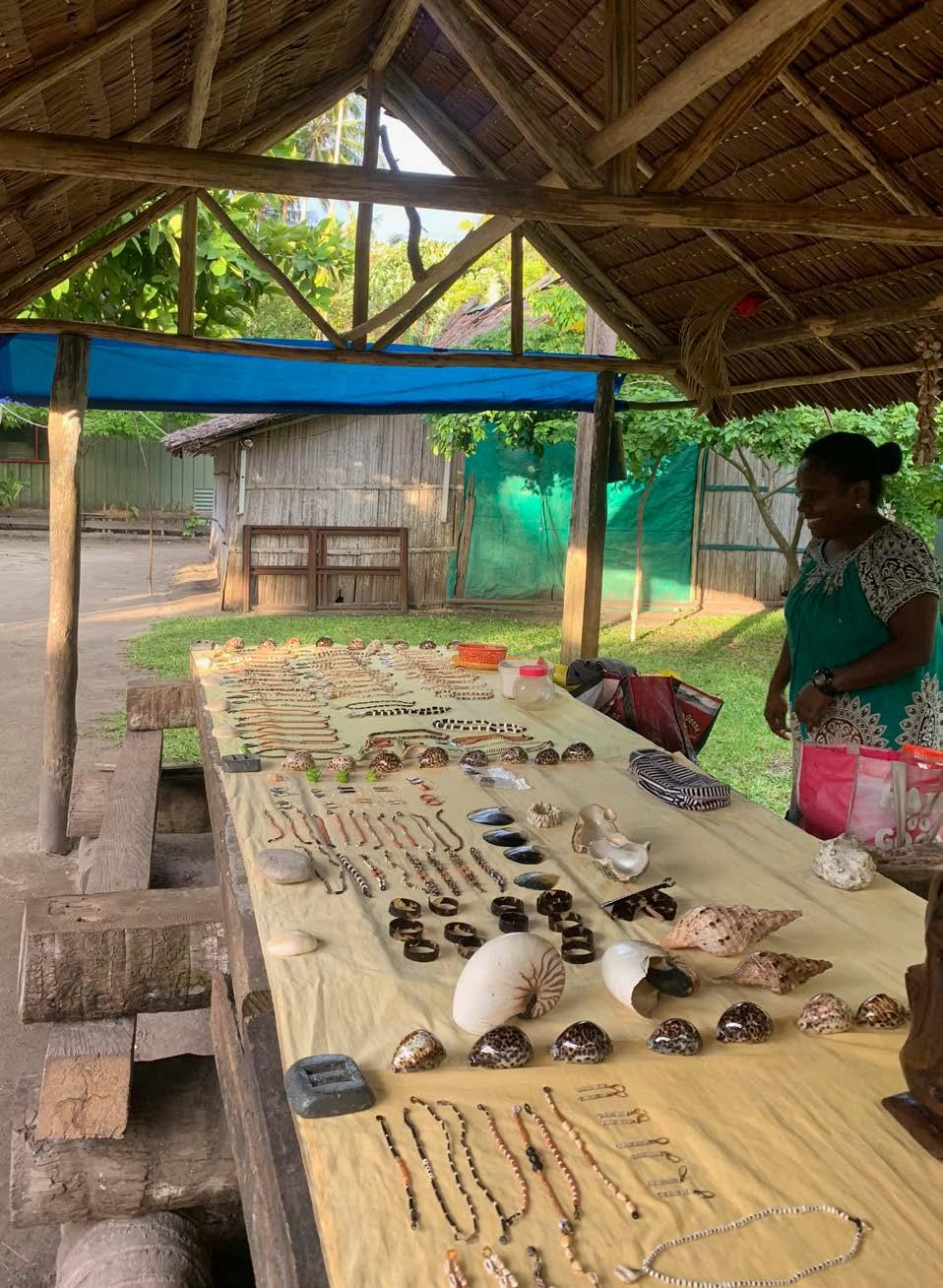
Sights & Attractions
• Kavieng Market
• Feeding of the Eels
• Lissenung Island Resort
• Diving Echuca Patch
• The Boluminski Bicycle Tour
• Remote Surfing

BOUGAINVILLE
Today, Bougainville is a peaceful and welcoming island with plenty of interesting attractions on offer. But it wasn’t always like this. Between 1988 to 1996, Bougainville was a place of great hardship when friction between the Panguna Copper Mine and the local Bougainville Revolutionary Army escalated into civil war. Sadly, up to 20,000 lives were lost before peace was established. This wasn’t, however, the island’s first encounter of war.
In 1942, the Japanese used Bougainville as a base to support its operations in the Pacific region. In 1943, Allied Forces attacked aggressively and eventually the Americans took control of the western side of the island. Shortly thereafter, the Japanese Forces infiltrated the mountains and jungles and ultimately fought head to head in a battle known as the Hellzapoppin Ridge Battle. Many war relics can still be found throughout Bougainville, including the plane wreckage of Admiral Yamamoto - regional head of the Japanese Forces in WWII. The latter is an extremely popular destination amongst Japanese visitors who are interested in knowing more about their history.
Rotokas Ecotourism, a local initiative, provides guided treks along the Rotokas-Numa Track where visitors can discover war relics, fascinating cave systems and stunning waterfalls. A breathtaking trek to Mount Balbi, an active volcano, is also highly recommended. If you’re a keen birder, embark on a birdwatching tour to spot the rare moustached Kingfisher, Bougainville crows, the pied goshawk, and much more. In addition, Rotokas Ecotourism can organise village tours where you can experience first hand how the locals live. The islands around Bougainville are also worth checking out. Cruise out to White Island or spend a few days exploring the hospitality of Pok Pok Island or Teop Island.
Keep an ear out for the Reed Festival staged in Arawa twice a year.
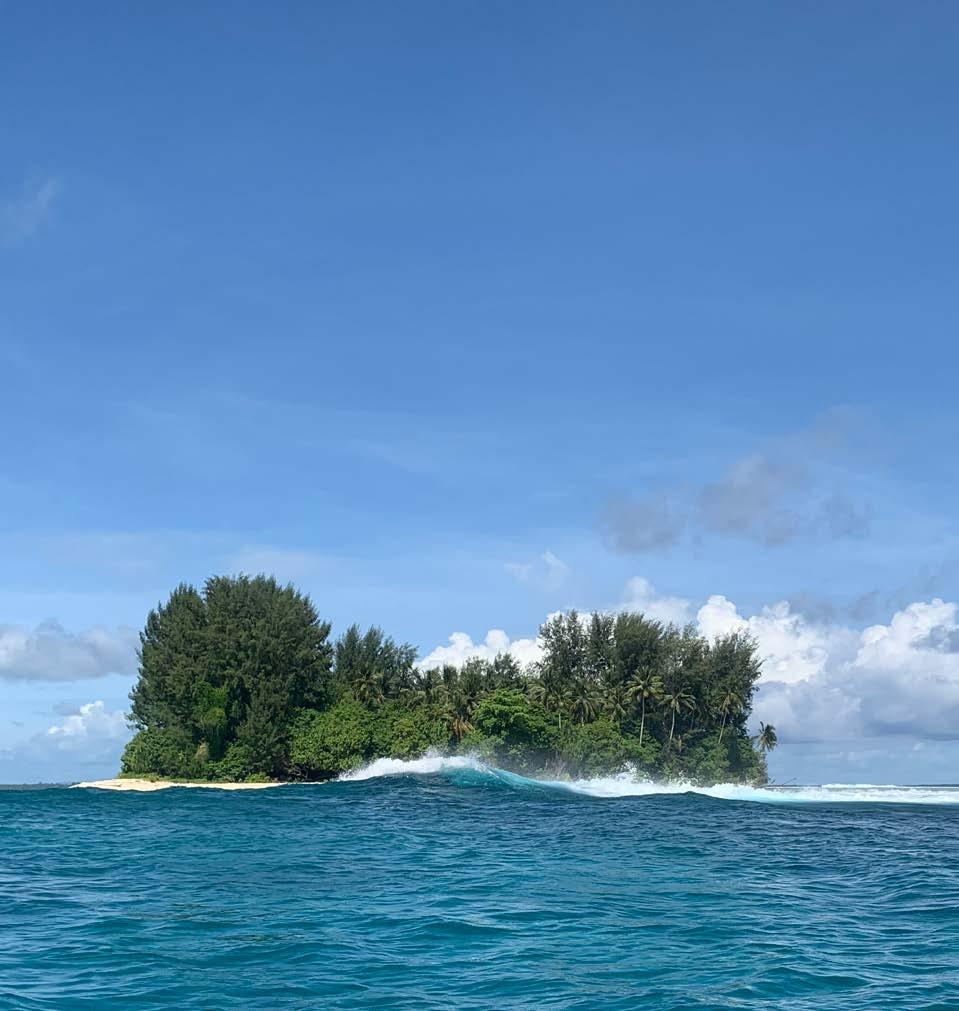
LISSENUNG ISLAND
LIssenung is a tiny island just a 20-minute boat ride from Kavieng. To visit this tropical paradise, you need to have made prior arrangements or be a guest of the resort. The boat leaves from the small wharf at Fisheries and will transport you across pristine waters which are teeming with exotic marine life.
Like Kavieng, Lissenung is famous throughout the world for its diving. For an easy day, just snorkel the house reef around the island which is home to almost 400 different fish species and exotic coral. For an exciting dive adventure, be sure to check out the famous Albatross Passage among many other incredible dives. Surrounding Lissenung are some islands renowned for their amazing surf, including Nu Salamon, Erup and the well-known Ral.
Lissenung is dedicated to turtle conservation and visitors are often treated to a day out to hunt for the eggs before the locals eat them. The 60 day hatching process requires a delicate hand and some clever planning. Warmer nests are believed to hatch female turtles while cooler nests hatch males. As a result, nests are placed in a variety of different places to ensure that variety is achieved.
While turtle conservation is highly regarded in the region, very little is known about marine turtles. It’s often said that turtles only lay eggs on a full moon, but scientists are yet to confirm a cycle. What we do know is that turtles arrive on the beach in the evening, crawl up the beach, prepare the nest, lay eggs and return to the beach. The young have a long road ahead to survive and go to a great deal of effort as they dig their way out of the nest (all the hatchlings dig together in one formation to ensure that the majority make it out). These cute marine creatures then make their way to the water amid seagulls and other predators. It is estimated that only one in every thousand turtles lives to adulthood. When the adults are fully grown, they return to the same spot to lay their eggs and the legacy continues. Nusa Island is probably the most well-known accommodation venue in Kavieng, located just a two minute boat ride from town. Day visitors are welcome for a small fee, but you will need to contact Nusa Island Retreat to organise a pick up.
Nusa is a great place to explore and relax. Snorkelling, canoeing and walking are all part of the rejuvenating experience with a pace that enables visitors to completely unwind. There is a small local market on the other side of the island where visitors can purchase local carvings and shell money. Shell money is a traditional currency used by many Papua New Guineans before the introduction of the Kina. Shells are broken up and then threaded along a string in which its value is decided by its length. It’s believed a certain artful skill is required to make shell money. The Tolai people in East New Britain still use shell money (the Tabu) for purchasing goods and as an exchange in ceremonies such as weddings.
Another must do while visiting Nusa is the walk across the island to Big Nusa. The island that the resort resides on is called ‘Nusa Lik’ which means ‘Little Nusa’ - an abbreviation of the Pidgin word Lik Lik.
Accommodation on Nusa is fairly unique and consists of a number of private huts which are raised off the ground. The balconies offer comfortable hammocks which are perfect for soaking up the sounds and sights on a warm evening while enjoying a chilled beverage.

Sights & Attractions
• Snorkelling
• Canoeing
• Walking to Big Nusa
• The Local Market
• Traditional Carvings
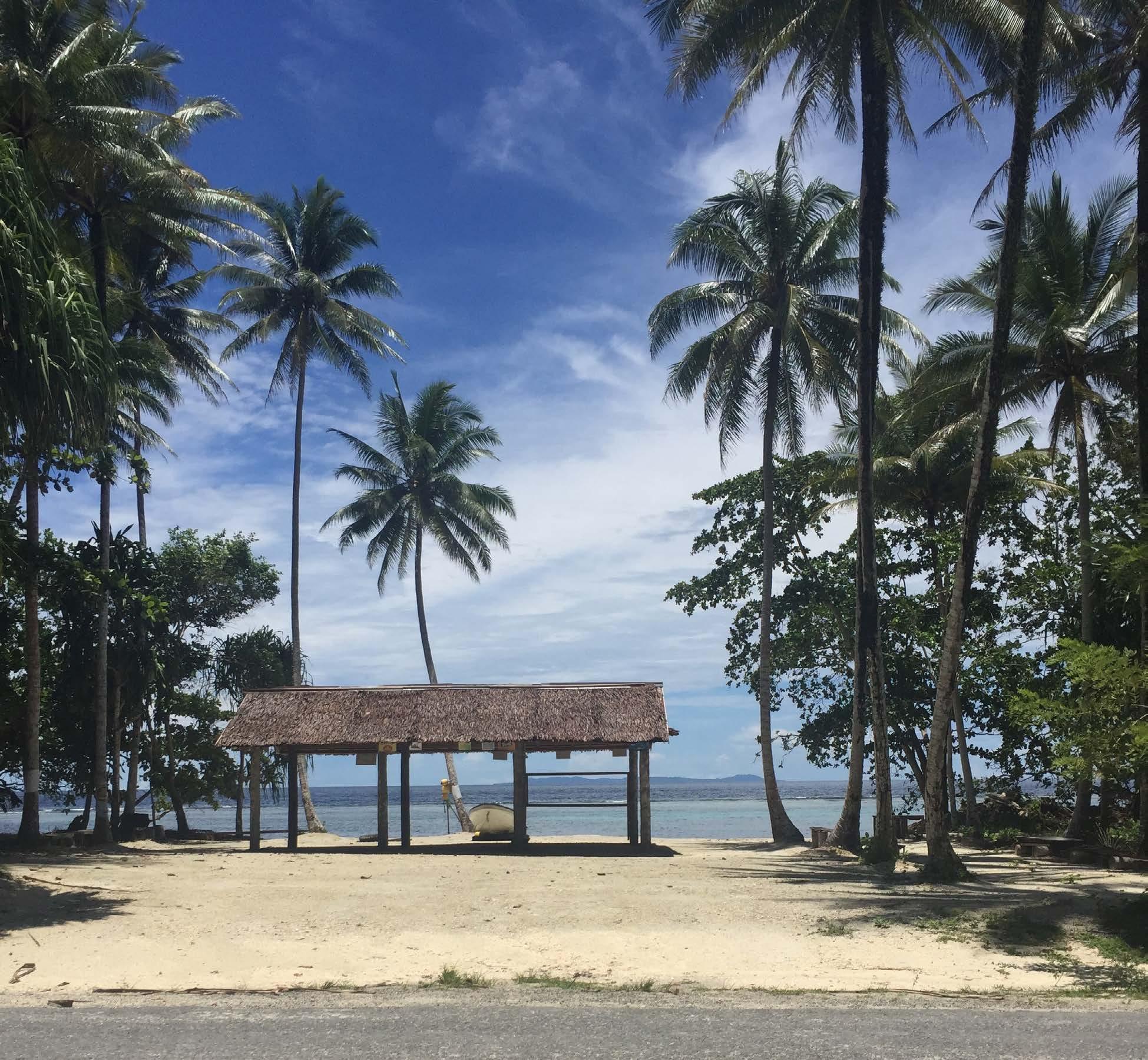
MANUS ISLAND
Manus Island boasts heavily timbered hills, striking waterfalls and is home to the stunning Emerald Green Snail.
For a unique outing, ask a local guide to take you to Tewii Lagoon which was home to the legendary mermaids, Henimei and Henipong. The lagoon is located inside a cave where the water is an unusual copper green colour and crystal clear. This is a sacred place for the locals so make sure you ask your guide before swimming in the waters. Wearing conservative swimming apparel is also expected. And beware, the water is cold!
If surfing in remote areas is your style, then there are few places quite like Manus. Sit back in this tropical oasis while the island serves up some excellent conditions for surfing. When the surf flattens out, take the opportunity to explore the exotic marine life with a little snorkelling or diving.
Fishing is abundant in the region, with mangrove bass, milk fish, mullet, mackerel, parrot fish and other varieties available here. Go fly fishing or try your hand at some deep sea fishing. The waters also provide the perfect conditions for sea kayaking due to the tranquil conditions and a number of islands in close proximity. Kayaking around the area at a relaxing pace, you can marvel at the unusual birdlife, beautiful fish and coral reefs, war relics and idyllic, hidden beaches. Just remember that if you stop at a random beach for any length of time to ask one of the locals about seeking permission from a village elder. Papua New Guineans will always be welcoming and hospitable, but it’s important to understand that there are some local courtesies that apply. Offer K10 to K20 or an article of clothing as payment to access beaches.
In the area close to the airport, there are three local villages called Papitalai, Naringel and Ruirui. From here you can do trekking, swimming, bike riding, birdwatching and more. For a cultural experience, check out the Garamut Dancing which is a traditional dance performed by the locals.
Kiriwina Island, Trobriand Islands
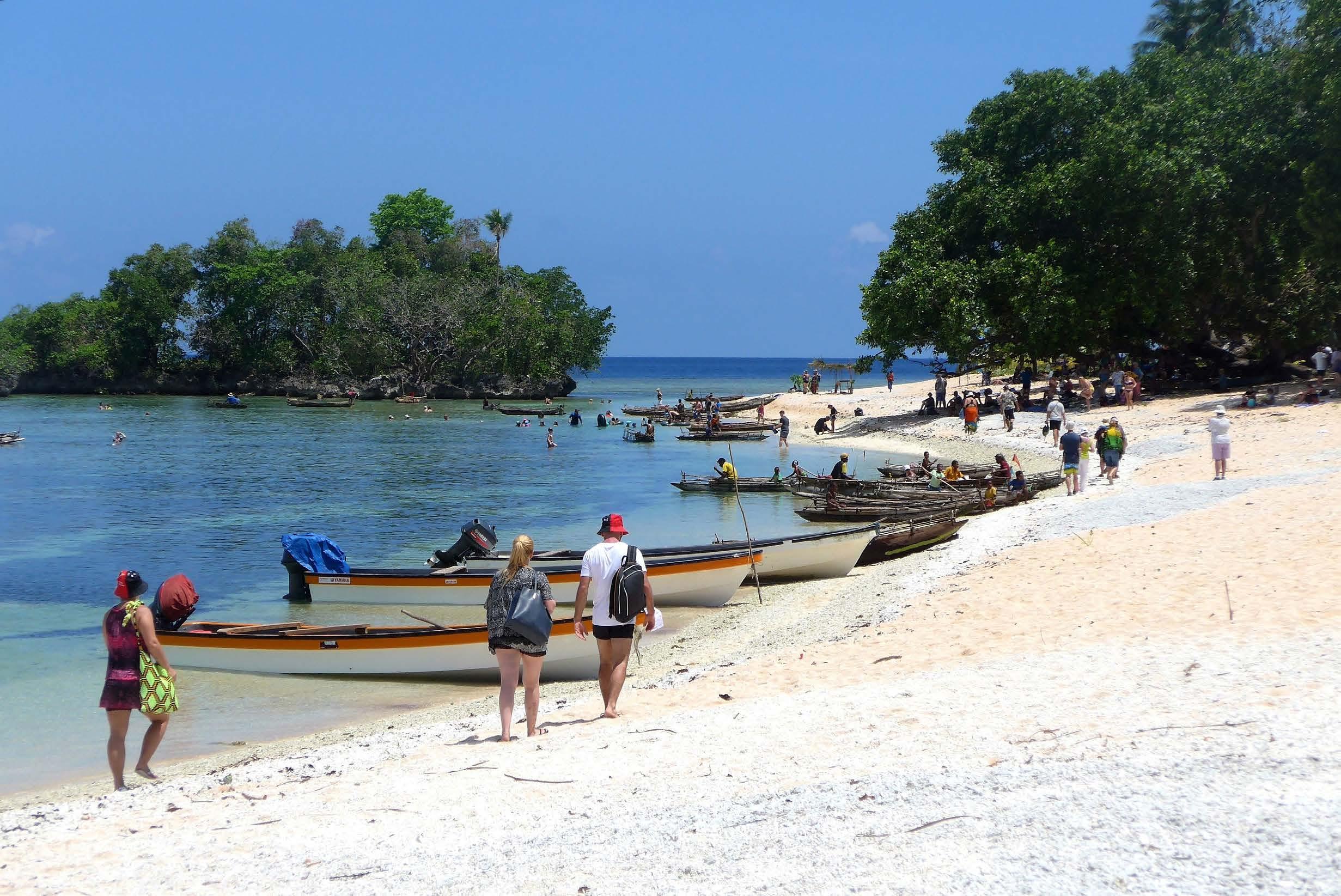
THE D’ENTRECASTEAUX ISLANDS
The D’Entrecasteaux Islands extend 160 kilometres across and includes Fergusson, Goodenough and Normanby Islands. Fergusson Island is a fascinating place to explore. One can relax at the famous Dei Dei Hot Springs or take a therapeutic mud bath. If you’re seeking something more upbeat, you can embark on a one and a half hour hike from Warluma to Mt Lamanai which offers exhilarating panoramas. Tawali Resort can organise transport to Fergusson Island, which is a three hour boat ride. Alternatively, you can contact one of the local villagers to assist you. Just make sure you clarify the financial details of this arrangement before departing.
On Normanby Island, which is an hour from Tawali in a dinghy, there is a dive site sitting five minutes off shore with plenty of wrecks to explore. The reef sharks and colourful marine life here make for a thrilling dive. Goodenough Island, which is about four hours by dinghy from Tawali, was named by Captain John Moresby after a naval colleague, James Graham Goodenough. The island boasts interesting rock paintings and around the coast the snorkelling is spectacular because of the abundant marine life here. If you want to stay on Goodenough Island, camping is available. First check with the villagers and as a courtesy you should pay a fee (K50 is recommended) for their hospitality. Large groups need to organise camping in advance, as in all places in PNG. It’s always best to contract a local guide to go with you who speaks the local language.
THE TROBRIAND ISLANDS
The Trobriand Islands, otherwise known as the Islands of Love, are made up of four central islands – Kiriwina Island, Vakuta, Kaileuna and Kitava. The social paradigm here is still dependent on traditional chiefs who govern the villages, though the hereditary lines are passed down via the female bloodline. Likewise, women can choose to have an array of lovers and villages are said to have huts devoted to their amorous activities. During the Milamala Festival, between June and August, the locals celebrate harvesting the yam, which takes ten months to ripen. At this time, traditions of the past are observed with rituals showing gratitude for a fortuitous season. On Kiriwina, the largest island here, accommodation is available and Airlines PNG travels regularly to the region. Just ask a local where the best places are to explore caves, swim and snorkel around the islands.

